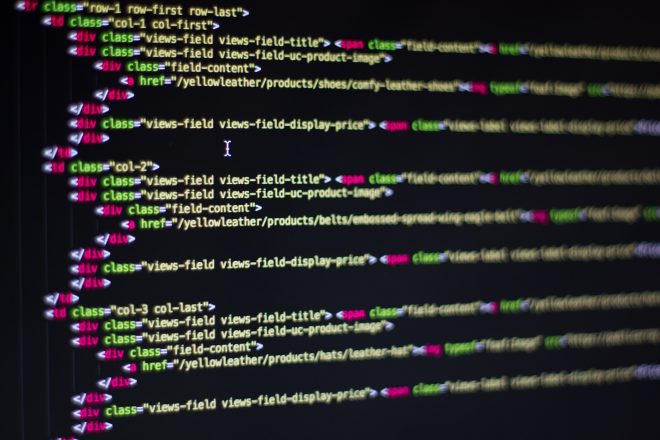Essential Secure Web Application Development Guidelines!

Embarking on the journey of web application development demands a strong focus on security from the outset. In the digital age, where cyber threats are ever-evolving, adhering to secure web application development guidelines is not just a recommendation; it’s a necessity. Security breaches can lead to significant financial losses, damage to reputation, and erosion of customer trust. Therefore, it is imperative for developers to integrate robust security measures throughout the development process.
At Biz4Solutions, we understand the importance of security in web application development. Our approach encompasses best practices that ensure the integrity, confidentiality, and availability of your applications. From initial concept to final deployment, we prioritize safeguarding your digital assets against potential vulnerabilities. To learn more about how we can enhance the security of your web applications, visit our website at Biz4Solutions.com.
In the following sections, we will explore essential guidelines that every developer should follow to fortify their web applications against cyber threats. This will include an examination of industry standards for secure coding, the importance of regular security audits, and the implementation of advanced security features such as encryption and multi-factor authentication. As we delve into these guidelines, remember that secure development is an ongoing process that requires vigilance and up-to-date knowledge of the latest security trends.
Understanding Web Application Security Threats
Grasping the nature and variety of web application security threats is crucial in developing a fortified defense strategy. Cybersecurity is a dynamic battlefield, with attackers constantly devising new methods to exploit vulnerabilities in web applications. Among the most common security threats are SQL injection, where attackers can manipulate a site’s database, cross-site scripting (XSS), which allows malicious scripts to be injected into webpages viewed by users, and cross-site request forgery (CSRF), which can trick a user’s browser into executing unwanted actions in an application where they’re authenticated.
Other prevalent risks include security misconfigurations, which can leave an application exposed due to improper setup, and broken authentication and access control vulnerabilities, which may enable unauthorized users to gain access to sensitive areas of an application. Additionally, developers must be wary of newer threats such as API security vulnerabilities, where attackers target the application’s backend services and data exchange processes.
Staying informed about the latest security advisories and understanding the potential impact of different attack vectors are fundamental to secure web application development guidelines. This knowledge not only aids in preventative measures but also informs the response strategies should a breach occur. It is essential for developers to consider these threats throughout the entire software development lifecycle to ensure a proactive approach to web application security.
Principles of Secure Coding and Development

Adhering to the principles of secure coding and development is the backbone of creating robust web applications. One of the fundamental principles is the concept of ‘security by design’, which should be integrated from the earliest stages of development. This involves regular code reviews, threat modeling, and adopting a least privilege approach to ensure that users have the minimum access necessary to perform their functions.
Developers must also practice input validation to guard against common threats like SQL injection and XSS attacks. Ensuring that all user-supplied data is validated, sanitized, and escaped before processing can significantly reduce the risk of malicious input compromising the system. Additionally, implementing secure authentication mechanisms, such as multi-factor authentication and strong password policies, are critical to protecting user accounts from unauthorized access.
Another key principle is the employment of encryption to protect data in transit and at rest. Using protocols like TLS for data transmission and encrypting sensitive data stored in databases helps prevent data breaches. It’s also imperative to keep all software dependencies up to date, as outdated components with known vulnerabilities are a prime target for attackers.
Lastly, error handling must be performed carefully to avoid revealing too much information to potential attackers. Custom error messages should be designed to provide the necessary feedback to users without disclosing sensitive system details.
By embracing these secure web application development guidelines, developers can construct a solid foundation for security that permeates throughout the application’s architecture.
Best Practices for Authentication and Authorization

Implementing best practices for authentication and authorization is critical in secure web application development. Authentication verifies a user’s identity, while authorization determines the level of access an individual is granted. One best practice is enforcing strong password policies, which include requirements for password complexity and regular changes. This minimizes the risk of unauthorized access due to weak or compromised credentials.
Furthermore, incorporating multi-factor authentication (MFA) adds an additional layer of security. MFA requires users to provide two or more verification factors to gain access to a resource, making it much harder for attackers to breach accounts. For authorization, the principle of least privilege should always be applied, ensuring users have the minimal level of access needed to perform their tasks, thus limiting the potential damage of a compromised account.
Session management is also an integral part of secure authentication and authorization. Developers should ensure that sessions are securely managed by using secure, random session identifiers, implementing session expiration, and providing users with the ability to log out. Moreover, access tokens and cookies must be protected by using secure flags such as ‘HttpOnly’ and ‘Secure’ to prevent unauthorized access via client-side scripts.
Role-based access control (RBAC) is another effective approach where access rights are grouped by role, and users are assigned roles based on their responsibilities. This simplifies the management of user permissions and ensures that users cannot access resources that are not pertinent to their role.
By following these secure web application development guidelines for authentication and authorization, developers can significantly enhance the security posture of their applications, thereby safeguarding user data and the integrity of the web application itself.
Implementing Data Protection and Encryption

Data protection and encryption are indispensable components of secure web application development. Protecting sensitive data in transit and at rest prevents potential breaches and exposure of user information. Encryption transforms data into a secure format that is unreadable without the proper decryption key, thereby ensuring that even if data is intercepted, it cannot be exploited by unauthorized parties.
Developers must employ Transport Layer Security (TLS) protocols to secure data during transmission. This is particularly important for any data exchanged between the client and server, such as login credentials, personal information, and payment details. Using strong encryption standards like TLS 1.2 or higher ensures that the data remains confidential and integral.
For data at rest, implementing encryption methodologies like Advanced Encryption Standard (AES) is crucial. Databases that store user information, financial records, or other sensitive data should be encrypted to prevent unauthorized access in the event of a system breach. Additionally, proper key management practices must be in place to handle encryption keys securely, ensuring they are stored and managed separately from the encrypted data.
Another aspect of data protection is the anonymization and pseudonymization of data where appropriate, especially when handling personally identifiable information (PII). This technique helps in minimizing the impact of a data breach, as the data would not directly be linked to an individual without additional information that is kept separately.
Lastly, developers should integrate comprehensive data backup and recovery strategies to ensure that in the event of data loss or corruption, there is a secure and recent backup available to restore the system to its previous state. Regularly testing these backups and recovery procedures is also vital to ensure that they are effective when needed.
By implementing these encryption and data protection strategies, web applications can significantly mitigate the risks associated with data breaches and cyber-attacks, thus maintaining the trust and confidence of users and stakeholders.
Regular Security Audits and Compliance Checks
.jpg)
Conducting regular security audits and compliance checks is a crucial step in the lifecycle of web application development. These audits are systematic evaluations of the security of a company’s information system by measuring how well it conforms to a set of established criteria. A thorough security audit will scrutinize the security of the system’s physical configuration and environment, software, information handling processes, and user practices.
Security audits should be performed regularly to ensure continuous protection and to identify any vulnerabilities that may arise over time. It involves assessing the web application for weaknesses, such as outdated software components, improper configurations, and unnecessary services that may provide potential entry points for attackers.
Compliance checks are equally important, as they ensure that the application meets industry standards and regulatory requirements, such as the General Data Protection Regulation (GDPR), Payment Card Industry Data Security Standard (PCI DSS), and the Health Insurance Portability and Accountability Act (HIPAA). Adherence to these standards not only protects against data breaches but also safeguards organizations from legal repercussions and loss of reputation.
Automated tools can be utilized to conduct some aspects of the audits, but they should be complemented with manual inspections by security experts for a comprehensive analysis. Regular updates to the security protocols and training of personnel are also essential in maintaining a robust defense against emerging threats.
For businesses looking to ensure their web applications are secure and compliant, Biz4Solutions offers expert services to help navigate the complex landscape of cybersecurity. Our team of professionals stays abreast of the latest security trends and regulations, providing peace of mind through meticulous audits and compliance checks.
Don’t take chances with your web application’s security. Engage with Biz4Solutions, and let us help you maintain the highest standards of security and compliance, ensuring your business and client data is protected against the evolving cyber threats.




